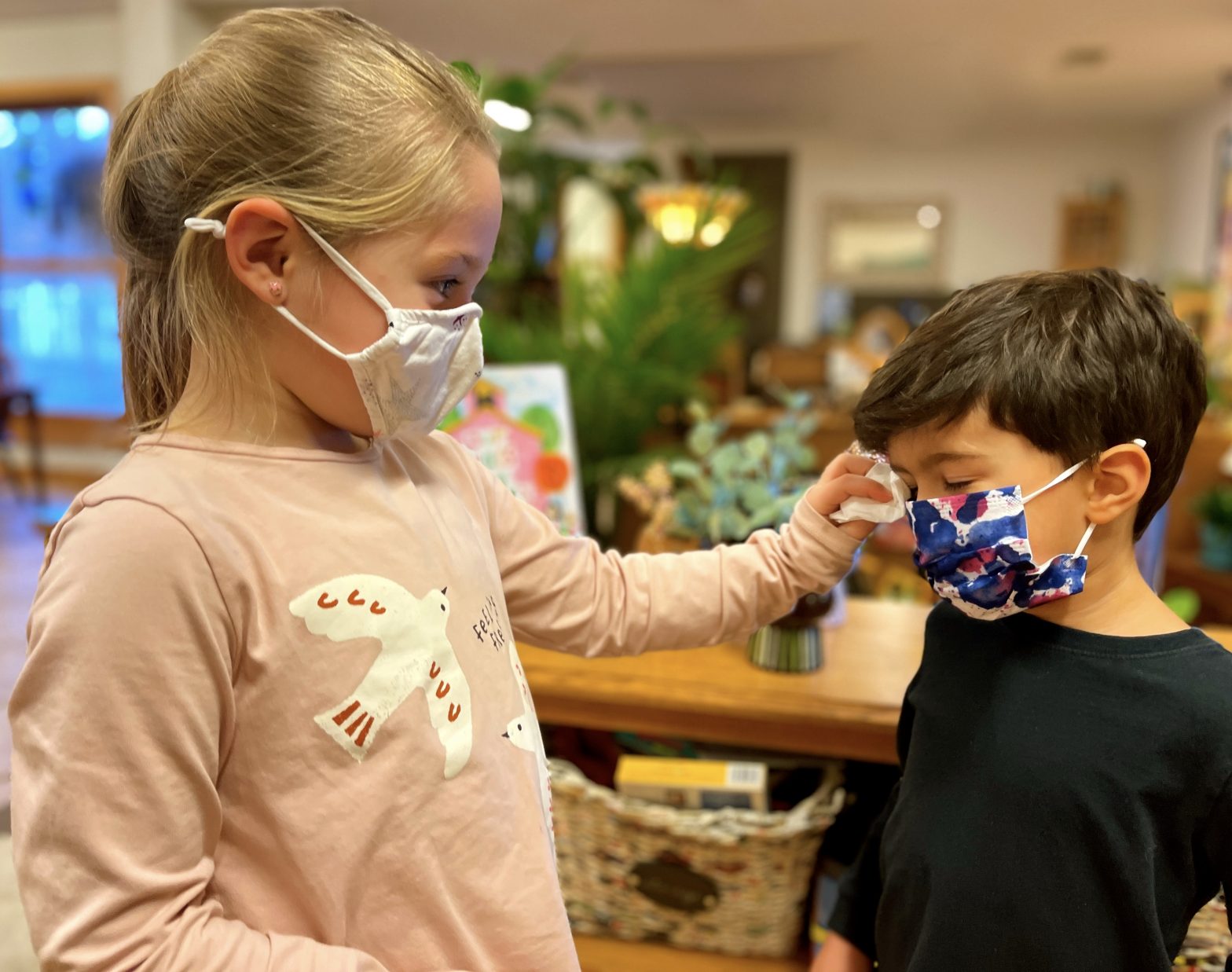Embracing Social Connections
By Michele Aspinall
I think we can all agree that in an age of social distancing, children are missing out on opportunities to develop critical interpersonal skills. The good, the bad, and the ugly. The sudden decline in socialization when the pandemic first hit meant that they were getting less practice with problem-solving, communication, and other social-emotional learning.
One of the many advantages of Montessori that sets us apart from other educational philosophies is the emphasis on the child’s freedom within the classroom. The Montessori teacher is there to entice and invite children to explore academically and socially. However, there is a responsibility attached to that freedom. If a child requires direction, the teacher is there to provide it at any given time. We are also there to mediate when problems emerge. And in a class of three through six-year-olds… that’s about every seven minutes give or take a minute or two.
As a Primary guide (serving ages three through six), I have the privilege of observing children embrace the classroom experience to its fullest every day. With that experience comes poor decision-making, picking themselves up (with support), and realizing that they will make it through. That is solid character building for our future leaders! On any given day, I can look around the class and find two children passionately debating who will be the first in line to go outside, who has the prettiest dress, or who has the best tasting snack (even though they are the same exact snack).
One afternoon two children sat down to fold towels together but couldn’t seem to get past the placement of their rugs. They were both digging their heels in and not coming to any resolution. One started screaming, and the other quickly retaliated with a push. All of this went down within two minutes. Once they cooled off, the problem-solving began. I sat down with them and started asking questions like, “What could you have done differently? What do you think the other was feeling and thinking?” Gaining empathy is one of the essential skills for effective communication. They were quite civil when all was said and done, but unfortunately not before a push was imparted and feelings hurt. However, this should be seen as an opportunity for growth that both children can benefit from in different ways. Patience, perseverance, compromise, compassion, and the ability to resist impulses in challenging situations are traits that we are constantly working to develop at school. This work doesn’t stop. Ever. But hopefully, any time that the children walk away from a situation such as this one, good judgement is building, and they are learning from their mistakes. For some children, it takes a few repeats of the same mistake before they learn the lesson. For some adults too!
Children are filled with emotions at this age but can be taught social skills and patience. We must encourage them to share their opinions in a socially acceptable way and, in turn, build confidence. Helping them to approach their challenges with a belief in solutions motivates them to engage in the creative process. Our job is to teach them that if they cannot find a solution, they must open their minds, seek advice, and apply new ideas and suggestions until the barriers are removed. It can be done. And when you parent in this way, your children learn that life is full of possibility when they apply perseverance in thought and action towards solving their problems. When solutions are the focus, we teach our children the all-important skill of pivoting in life whenever necessary. And hasn’t that been something we’ve learned in the last two years.
Here are just a few ways you can get started at home:
- Teach Understanding – Understanding what conflict is and how it can have a negative effect on someone is a good start. This understanding will help them know why conflict resolution is so important.
- Teach Empathy – After understanding comes empathy. Conflict affects more than one person, so it’s important to empathize with the other person’s feelings to resolve it.
- Teach Responsibility –Teaching how to take responsibility for their part in the conflict.
- Teach Communication – To resolve conflict peacefully, using their “words” is a must. Communication is vital to conflict resolution, so teach them how to talk about the issue and come to a solution.
- And do your best to Model All of Them!
This lifelong process begins with basic foundational skills imparted now through a series of conversations and experiences while your children are young. An internship to adulthood, if you will.



Leave a Comment